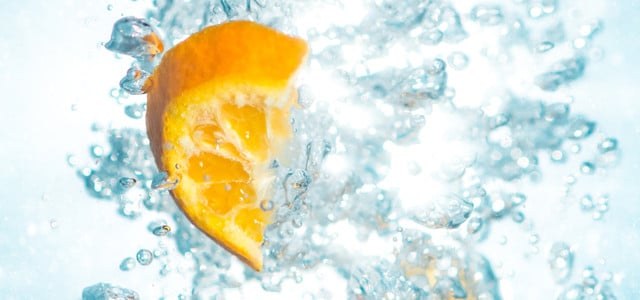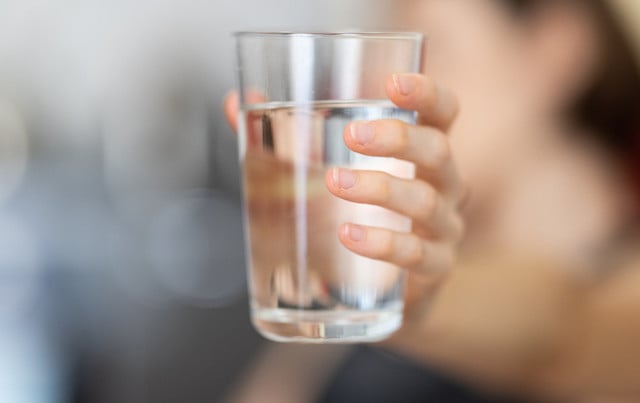
The current heat wave is affecting many people. It is important that you drink enough. But how much water should it be per day? And what are the best thirst quenchers in extreme heat?
Every child knows: Drinking a lot is important. Because we need water so that the metabolic processes work and our body stays healthy. Water transports the dissolved nutrients to the cells, our kidneys need water to flush waste products out of the body and water helps regulate body temperature: our body produces sweat to cool the skin so that the body temperature does not rise too much.
What happens if we drink too little?
Even with a small loss of liquid we are less efficient. We react with headaches, get tired and can no longer concentrate. A larger deficiency can lead to circulatory problems, tachycardia and dizziness.
If you don’t drink enough and become dehydrated for a long time, you have to reckon with serious damage to your health, explains Professor Dr. Jan C. Galle, spokesman for the German Society for Nephrology (DGfN). The blood thickens, there can be disturbances of consciousness, periods of confusion, a circulatory collapse and organ failure. In extreme cases, dehydration can be fatal. Older people and people with disabilities are particularly at risk here.
What helps? When it’s hot in midsummer – like it is right now – we need significantly more fluids than usual. The need for fluids also increases during sports and physical exertion. But how much fluid should you drink on a hot day?

How much to drink when it’s hot
Drinking one and a half to two liters of water a day is the widespread general rule of thumb. This amount is recommended by the German Society for Nutrition (DGE), the consumer advice center and numerous doctors.
Everywhere, however, the addendum is: more should be drunk in the heat. The DGE recommends drinking significantly more water in high heat, physically demanding work and sports: “Then 0.5 to 1 liter of water per hour can be necessary”. The consumer advice center advises: “Especially on hot days and during physical exertion, the fluid intake should be increased – here the fluid requirement can increase three to four times.”
Important here: There is no general minimum amount, because every body works differently. This is also shown by a recent study by the National Institute of Biomedical Innovation. The study measured the water turnover of more than 5,600 people from 26 countries aged eight days to 96 years and found daily averages ranging from one liter per day to six liters per day. According to the scientists, the amount of water required depends on gender, height, weight, activity level, temperature, altitude, eating habits and some additional factors.
when to drink Two tips will help
- In general, you should drink before you feel thirsty. Thirst is actually an alarm sign that shows that the body is already lacking fluids: “Those who are thirsty drink too late, because the feeling of thirst is individual and not a reliable sign. Thirst is above all an alarm signal from the body that it needs liquid,” explains sports physician Hans-Wilhelm Müller-Wohlfahrt.
- Looking into the toilet bowl can also help: If the urine is light and clear, this is a sign that your body is well hydrated. An intense shade of yellow shows that your body does not contain enough water.
Can you drink too much?
Theoretically yes. However, healthy people need not fear the phenomenon of water intoxication. The DGE gives the all-clear: “Drinking too much liquid does not damage the healthy organism. Healthy people simply excrete excess fluid through the kidneys.
In so-called water intoxication (overdrinking), the amount of sodium in the blood is diluted to such an extent that the salt levels are too low. Extreme athletes and those with heart, kidney or liver diseases should keep an eye on their drinking volume.
What drinks are best when it’s hot?
“Tap water, mineral water, unsweetened herbal and fruit teas as well as fruit juice and fruit juice spritzers are ideal refreshments on hot days,” according to the recommendation of the consumer advice centers. You should dilute juice spritzers to avoid consuming too much sugar. If you want, you can spice up mineral water with peppermint leaves or a slice of lemon. According to current scientific knowledge, coffee may be included in the liquid balance.
The important thing is that not only the fluid, but also the mineral balance must be kept in balance. So make sure you get enough electrolytes. “Tap water usually has a sufficient dissolved mineral content to cover the need with simultaneous balanced nutrition to a sufficient extent,” explains the Federal Center for Health Education (BZgA).
Are isotonic drinks useful?
With isotonic drinks, the ratio of nutrients and liquid corresponds to that of blood. The result: the body can absorb the water from the drink very quickly. Öko-Test (issue 7/2023) has just had 23 sports drinks tested in the laboratory. The result: The three best products are just “satisfactory”, eight rattle through the test. Most sports drinks don’t have enough sodium, which is important for muscle function but which we lose when we sweat.
The eco-testers make this judgment based on a recommendation from the German Society for Nutrition (DGE) for sports drinks. Accordingly, 400 milligrams of sodium per liter is the minimum. Only four isotonic drinks in the test achieve it.
If you want really good isotonic sports refreshment, you can easily prepare it yourself: according to the Öko-Test, mix two parts water with one part juice, for example from apple or currant. One gram of table salt should be added to the liquid per liter of drink, which corresponds to 400 milligrams of sodium. If you don’t have a precision scale, you can alternatively measure out four small knife tips or two large pinches of table salt.
Drinking in the heat – 7 tips
- A lot of fluid is lost at night, so it is best to start the day with a large glass of water.
- Do not wait until you are thirsty (see above).
- On hot days, the drinks you drink should be neither too warm nor too cold.
- Water-rich foods such as melons, cucumbers, tomatoes or strawberries also provide the body with liquid.
- If you exercise on a hot day, you should drink even more. Also read: Sport in the heat: Prof. Ingo Froboese gives tips
- If you sweat a lot, you should compensate for the loss of fluid as soon as possible.
- Don’t drink too much at once, drink regularly and throughout the day.
If you have problems drinking enough, you can help with a few tricks:
- Place water within easy reach at your workplace or in your home.
- Refill the glass as soon as it is empty.
- Place notes in your home reminding you to drink.
- With the help of a drinking app or an alarm clock you can be reminded.
Drink sustainably – that’s how it works
- If you drink tap water, you save not only transport distances, but also packaging and the hassle of carrying crates.
- If you buy drinks in the packaging: preferably in the regional reusable bottle!
- The further drinks are transported, the worse their environmental balance is. Therefore: Buy locally bottled drinks.
- Reduce drinks from distant countries as much as possible. Coffee, many types of tea and exotic juices come from far away and are often produced under difficult conditions.
- For on the go, we recommend environmentally friendly water bottles:
With material from the dpa.
Read more on Techzle.com:
- Let the water run for a short time: Necessary – or a waste?
- 7 heat-related mistakes to avoid
- Over 30 degrees in Germany: When does heat become dangerous?